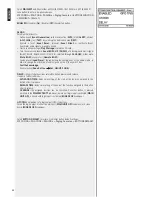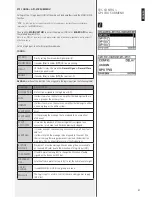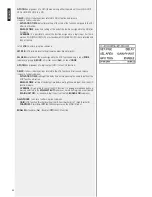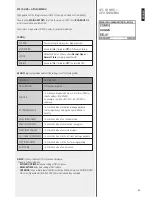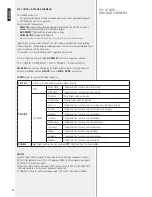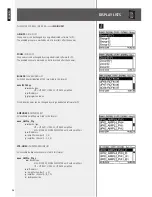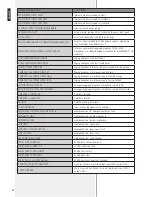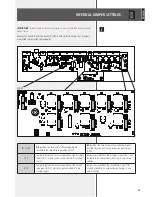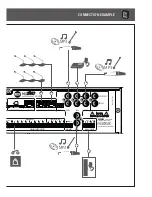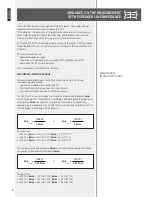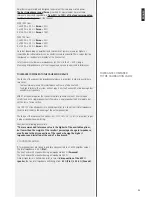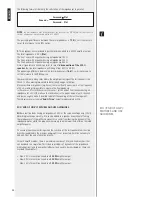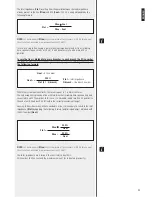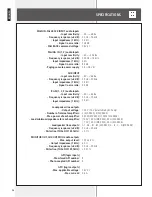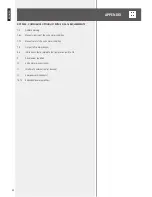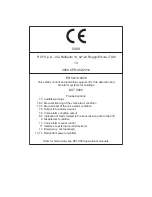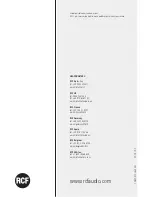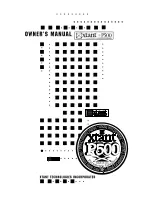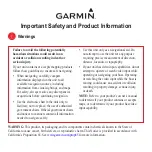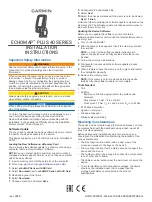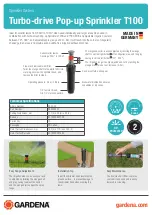
54
ENGLISH
The following formula is basically the calculation of the impedances in parallel:
NOTE
:
The
liNe
iMpedaNce
here
iS
cONSidered
aT
The
frequeNcY
Of
20 h
z
(
which
iS
NOT
equal
TO
The
ONe
MeaSured
bY
aN
iMpedaNce
MeTer
aT
1
k
h
z
)!
The percentage difference between the two impedances is
7.14%
, so it is necessary
to set the tolerance to the
5%
option.
2.
Three speaker lines are linked in parallel and connected to a 500 W amplifier output.
The total impedance is 50 Ω (
Ztot
).
The line 1 ends with a speaker having an impedance 140 Ω.
The line 2 ends with a speaker having an impedance 220 Ω.
The line 3 ends with a speaker having an impedance 350 Ω.
Since all speakers are linked in parallel, in case of
disconnection of the 350 Ω
speaker
, the line total impedance will change from 50 Ω to 58.3 Ω.
The percentage difference between the two impedances is
16.6%
, so it is necessary to
set the tolerance to the
15%
option.
However, there are many cases where the weight percentage of the last speaker is less
than 5%, often making impossible to detect any damage to the line.
Moreover, there are speakers (e.g. horns) that are virtually open circuits at the frequency
of 20 Hz, making it impossible to measure the line impedance.
In these cases, it is strictly necessary to connect (at the end of lines) devices having an
impedance (at 20 Hz) that allows the calibration (in the proper range of each channel)
and low enough to make it possible to detect the opening of the last line segment.
These devices are just named
‘End Of Line’
, hereafter abbreviated as EOL.
EOL (‘END OF LINE’): FEATURES AND USE GUIDELINES
EOL
are reactive loads having an impedance 200 Ω at the resonance frequency (20 Hz).
Absorbing reactive power only, EOL can be added to a speaker line without affecting
the rated power of its amplifier. However, this is valid if considering the dynamic of the
impedance meter, which can properly measure up to a maximum load of twice the rated
amplifier power.
To ensure proper line monitoring when the constrain of the last speaker of various line
branches (explained in the previous paragraph) is not respected, it will be necessary to
add an EOL at the end of each line branch.
For each amplifier model, there is a maximum number of EOL (and line branches) that
can be added to a single line. This is due to problems of dynamics of the impedance
measuring circuit and the amplifier (eddy currents need to be considered, as these can
overload the amplifier).
-
Max. 5 EOL for each line linked to a
500 W
amplifier output.
-
Max. 4 EOL for each line linked to a
250 W
amplifier output.
-
Max. 2 EOL for each line linked to a
125 W
amplifier output.
Znoend =
Zmaxend Ztot
Zmaxend
–
Ztot
EOL (‘END OF LINE’):
FEATURES AND USE
GUIDELINES
Summary of Contents for MX 9502
Page 2: ......

